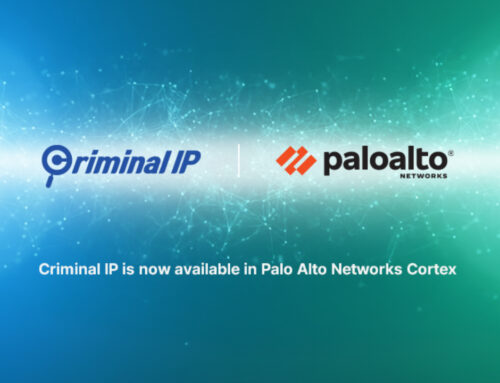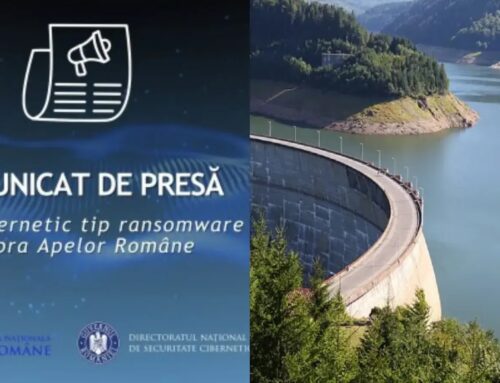
SonicWall SMA Devices 0-Day RCE Vulnerability Exploited to Deploy OVERSTEP Ransomware
Urgent Cybersecurity Alert: SonicWall SMA 100 Series 0-Day RCE Fuels OVERSTEP Ransomware Attacks
In the relentless landscape of cyber threats, the re-emergence of vulnerabilities in end-of-life (EOL) hardware serves as a stark reminder of persistent risk. Recent investigations have uncovered a dangerous confluence: a suspected 0-day Remote Code Execution (RCE) flaw targeting SonicWall’s EOL SMA 100 series appliances, actively exploited to deploy the insidious OVERSTEP ransomware. This covert campaign, attributed to the financially motivated threat group UNC6148, underscores the critical need for immediate action and heightened vigilance among IT professionals and security analysts.
The Anatomy of the Attack: UNC6148, 0-Day RCE, and OVERSTEP
The campaign targeting SonicWall SMA 100 series devices is sophisticated and multi-staged. UNC6148, a financially motivated threat actor, meticulously orchestrates the compromise, moving from initial access to full network subjugation. The core of this attack is a suspected 0-day RCE vulnerability, currently without a public CVE identifier, which grants attackers the ability to execute arbitrary code remotely on affected devices.
The progression of the attack unfolds as follows:
- Credential Theft: The initial breach leverages the RCE vulnerability to steal critical administrator credentials and one-time-password (OTP) seeds. This effectively neutralizes multi-factor authentication controls, providing attackers direct access to the device.
- Device Compromise: With credentials in hand, UNC6148 pivots to achieve full compromise of the SonicWall SMA appliance. This deep level of access allows for persistent control and further reconnaissance.
- Backdoor Deployment: A sophisticated backdoor, dubbed OVERSTEP, is then deployed. OVERSTEP is not merely a tool for maintaining access; it’s a precursor to wider network infiltration.
- Data Exfiltration and Ransomware Deployment: Post-compromise, the attackers proceed to exfiltrate sensitive data, adding an extra layer of leverage. Subsequently, OVERSTEP ransomware is deployed across the compromised network, encrypting critical systems and demanding ransom for decryption.
The targeting of EOL devices like the SonicWall SMA 100 series is particularly concerning, as these devices typically no longer receive security updates or patches, making them attractive, perpetually vulnerable targets for threat actors.
Affected Devices and Severity
The current campaign specifically targets SonicWall SMA 100 series appliances that have reached their end-of-life status. While no specific CVE has been publicly assigned yet for this particular 0-day RCE, the severity is critical given it enables unauthenticated remote code execution, leading to full system compromise and ransomware deployment. Organizations still utilizing these EOL devices face an immediate and severe risk of data breach and significant operational disruption.
Risk Assessment: Why This Matters to Your Organization
For any organization relying on SonicWall SMA 100 series appliances, the implications of this vulnerability are profound. The ability of attackers to gain RCE, steal administrator credentials, and deploy ransomware means:
- Loss of Confidentiality: Stolen administrator credentials and data exfiltration directly impact data confidentiality.
- Loss of Integrity: Ransomware encrypts and corrupts data, compromising its integrity and availability.
- Availability Risks: Encrypted systems render services unavailable, leading to significant downtime and operational paralysis.
- Reputational Damage: A successful cyberattack can severely damage an organization’s reputation and trust with its customers and partners.
- Financial Impact: Beyond direct ransom payments (which are not advised), recovery costs, legal fees, and potential regulatory fines can be exorbitant.
Remediation Actions and Mitigation Strategies
Given the critical nature of this vulnerability and its active exploitation, immediate action is paramount. For organizations still operating SonicWall SMA 100 series appliances, the following steps are crucial:
- Immediate Decommissioning/Isolation: If possible, immediately decommission or isolate all SonicWall SMA 100 series appliances. As these are EOL devices, they will not receive patches for this 0-day vulnerability.
- Migration to Supported Solutions: Transition to supported, up-to-date secure remote access solutions. Prioritize vendors with strong security postures, active patch cycles, and comprehensive support.
- Network Segmentation and Least Privilege: Implement robust network segmentation to limit the blast radius of any potential compromise. Enforce the principle of least privilege for all user accounts and network access.
- Strong Credential Management: Rotate all administrative passwords, especially those associated with remote access solutions. Implement and enforce strong multi-factor authentication (MFA) across all critical systems, ensuring it’s resistant to credential theft tactics that target OTP seeds.
- Threat Hunting and Incident Response: Actively hunt for indicators of compromise (IoCs) related to UNC6148 and OVERSTEP ransomware within your network. Ensure your incident response plan is up-to-date and thoroughly tested for ransomware scenarios.
- Regular Backups: Maintain comprehensive, offline, and immutable backups of all critical data. Test your backup recovery procedures regularly.
Tools for Detection and Mitigation
While direct patching for EOL devices is not an option, several cybersecurity tools can aid in detection of compromise or bolster overall security posture:
| Tool Name | Purpose | Link |
|---|---|---|
| Network Intrusion Detection/Prevention Systems (NIDS/NIPS) | Detecting suspicious network traffic, C2 communications from OVERSTEP, and exploit attempts. | Snort, Suricata |
| Endpoint Detection and Response (EDR) Solutions | Monitoring endpoints for anomalous behavior, file encryption, and OVERSTEP ransomware activity. | CrowdStrike Falcon Insight, VMware Carbon Black |
| Vulnerability Management Solutions | Identifying other potential vulnerabilities in your environment that could serve as pivoting points. | Tenable Nessus, Qualys VMDR |
| Security Information and Event Management (SIEM) | Aggregating and analyzing logs from all security devices to detect attack patterns and indicators of compromise. | Splunk Enterprise Security, Elastic Security |
Conclusion
The active exploitation of a 0-day RCE on SonicWall SMA 100 series appliances by UNC6148, leading to the deployment of OVERSTEP ransomware, highlights an ongoing and critical threat. The targeting of end-of-life hardware underscores a fundamental tenet of cybersecurity: unsupported systems are significant liabilities. For organizations still relying on these vulnerable devices, immediate action – isolation, decommissioning, and migration – is not merely recommended, but essential for safeguarding sensitive data and maintaining operational continuity. Proactive threat hunting, robust incident response capabilities, and a commitment to modern, supported security solutions are the pillars of defense against such sophisticated attacks.





